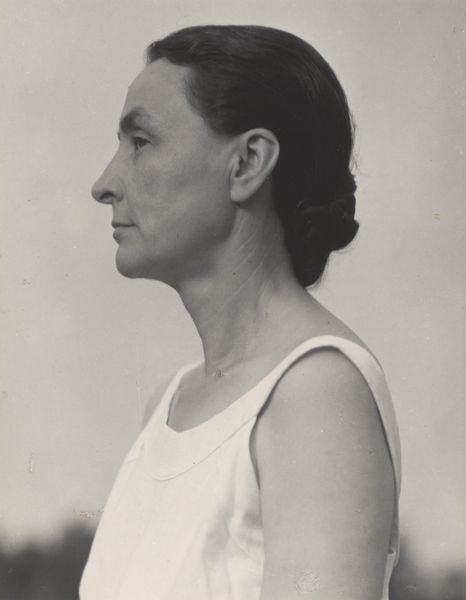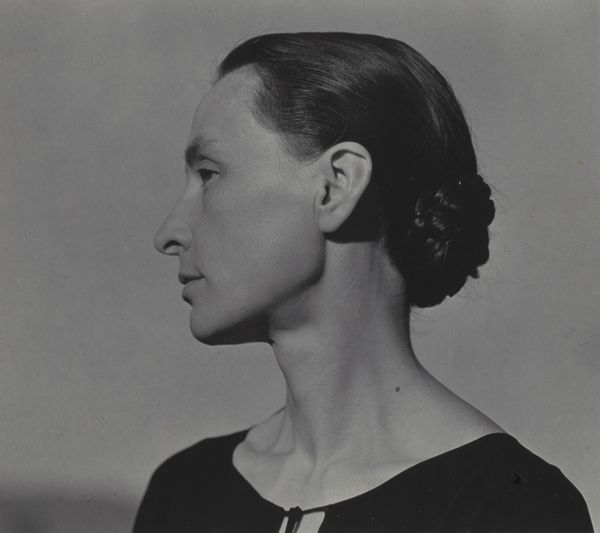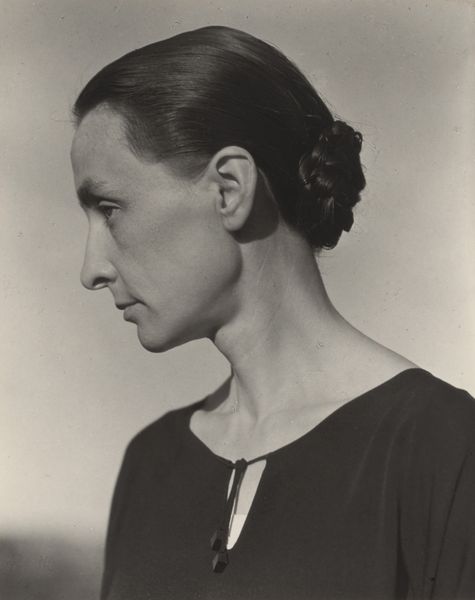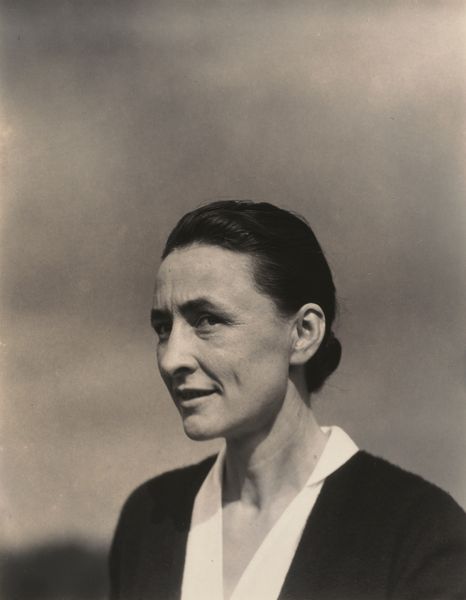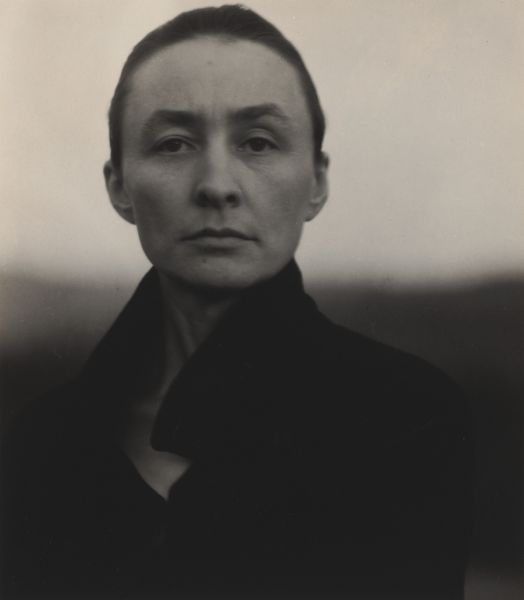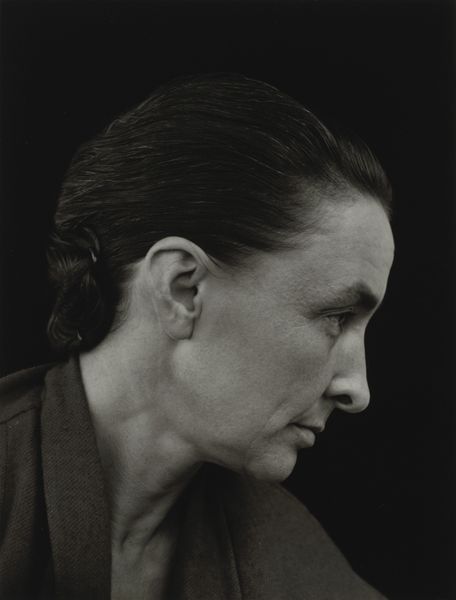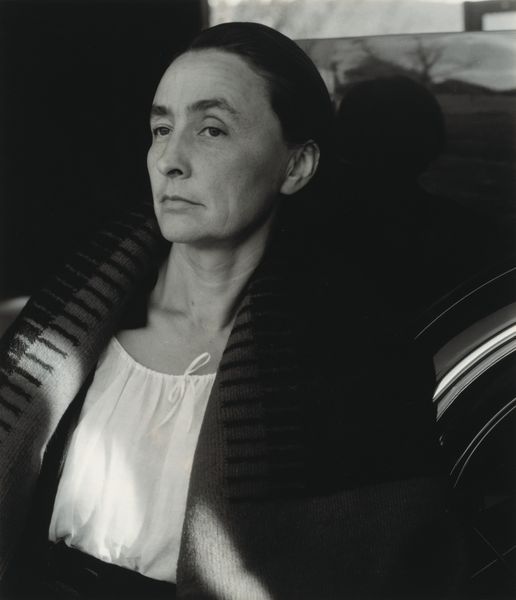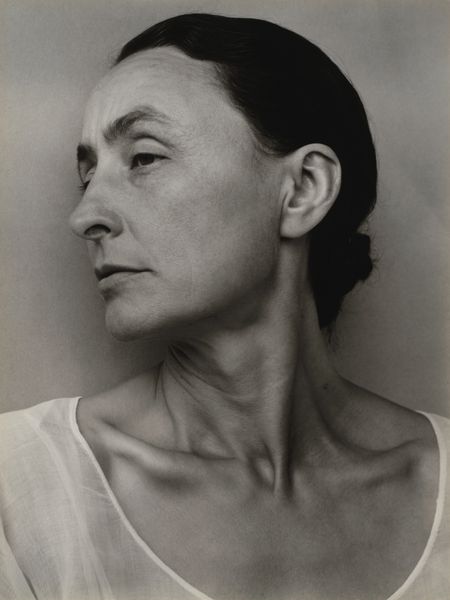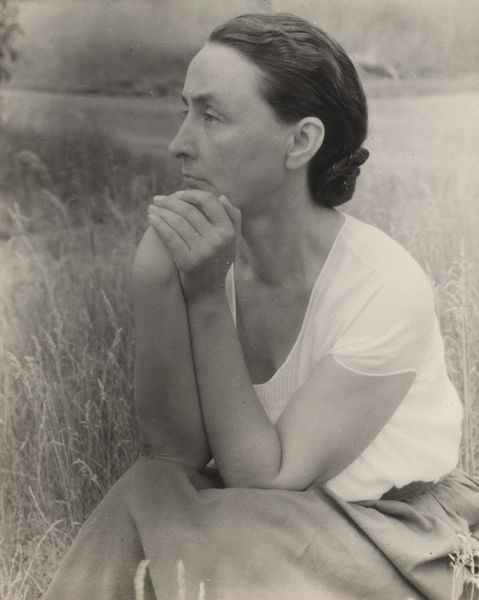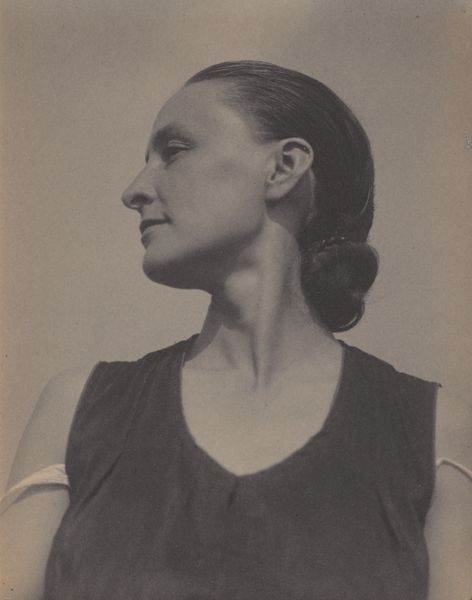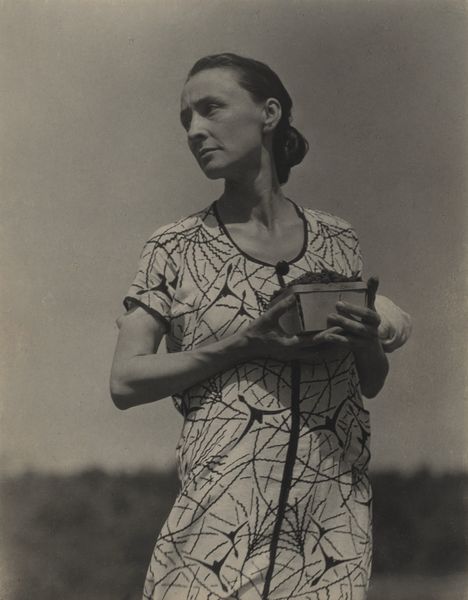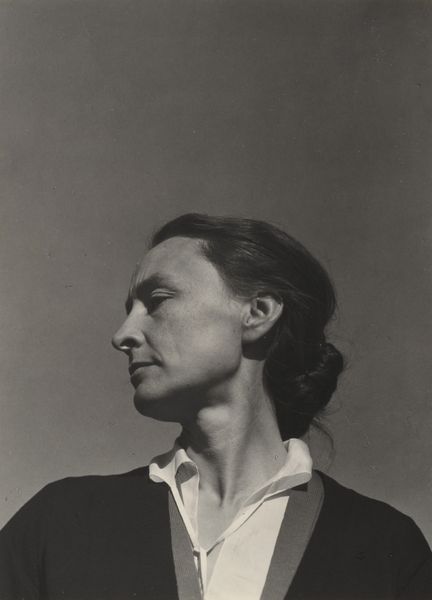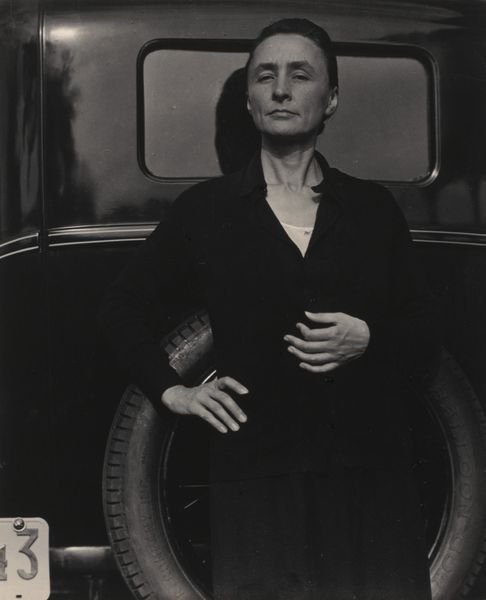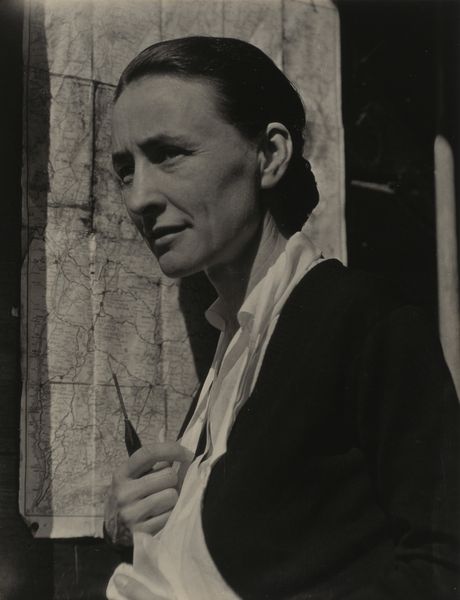
photography, gelatin-silver-print
#
portrait
#
self-portrait
#
portrait
#
photography
#
intimism
#
black and white
#
gelatin-silver-print
#
modernism
#
realism
Dimensions: sheet (trimmed to image): 11.6 x 9.2 cm (4 9/16 x 3 5/8 in.) mount: 34.2 x 27.6 cm (13 7/16 x 10 7/8 in.)
Copyright: National Gallery of Art: CC0 1.0
Editor: This is Alfred Stieglitz's photographic portrait of Georgia O'Keeffe from 1924, a gelatin-silver print. It's quite striking – such clarity and intimacy. What's your perspective on this piece? Curator: What grabs my attention immediately is the complex relationship between Stieglitz, the photographer, and O'Keeffe, the subject and artist in her own right. It wasn’t just a collaboration, but a constructed image dependent on their intertwined personal and professional lives. Think about the labor involved – Stieglitz's darkroom skills, the cost of materials at the time, the performative aspect for O’Keeffe to sit and embody a particular version of herself for him. How does the final object obscure these elements of production? Editor: That's a really interesting way to frame it, considering it's so minimalist in its presentation. The emphasis seems solely on *her*. Are you suggesting the image's success depended on more than just O'Keeffe’s beauty and presence? Curator: Precisely. Consider the materials. A gelatin-silver print elevates photography, aligning it with the "high art" of painting, fighting for recognition in art world circles at the time. And, of course, consider the socio-economic context: access to photographic materials, the artistic circles Stieglitz and O'Keeffe navigated... it all shaped the image. Was O'Keeffe empowered or objectified by this photographic transaction, how complicit was she? The nuances of power here affect its meaning and legacy. Editor: So, the photograph isn't just about capturing O'Keeffe’s likeness, but about the power dynamics and material conditions of its making. Curator: Exactly. And that those material conditions helped define them both professionally. A seemingly straightforward portrait unveils the layers of artistic production and societal frameworks inherent in its existence. What have you gained from this approach? Editor: It has totally changed my thinking. I always thought about art as more individualistic, more “inspired.” Curator: Precisely. It helps show art making within its production contexts.
Comments
No comments
Be the first to comment and join the conversation on the ultimate creative platform.
